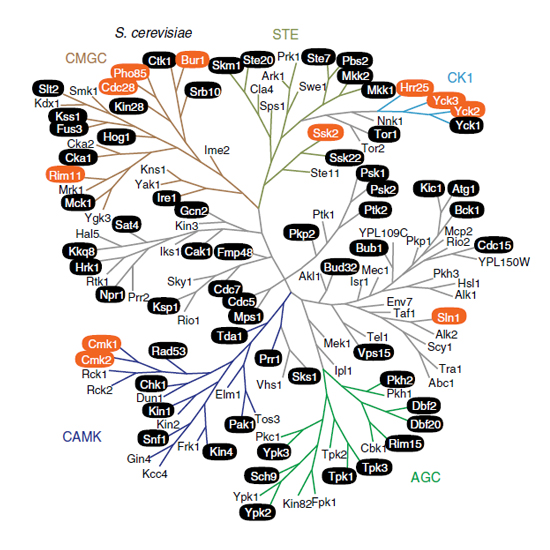Noncanonical CTD kinases regulate RNA polymerase II in a gene-class-specific manner
31-Dec-2018
Nature Chemical Biology, https://doi.org/10.1038/s41589-018-0194-1
Nature Chemical Biology, online article
Phosphorylation of the carboxyl-terminal domain (CTD) of the largest subunit of RNA polymerase II (Pol II) governs stage-specific interactions with different cellular machines. The CTD consists of Y1S2P3T4S5P6S7 heptad repeats and sequential phosphorylations of Ser7, Ser5 and Ser2 occur universally at Pol II-transcribed genes. Phosphorylation of Thr4, however, appears to selectively modulate transcription of specific classes of genes. Here, we identify ten new Thr4 kinases from different kinase structural groups. Irreversible chemical inhibition of the most active Thr4 kinase, Hrr25, reveals a novel role for this kinase in transcription termination of specific class of noncoding snoRNA genes. Genome-wide profiles of Hrr25 reveal a selective enrichment at 3ʹ regions of noncoding genes that display termination defects. Importantly, phospho-Thr4 marks placed by Hrr25 are recognized by Rtt103, a key component of the termination machinery. Our results suggest that these uncommon CTD kinases place phospho-Thr4 marks to regulate expression of targeted genes.











